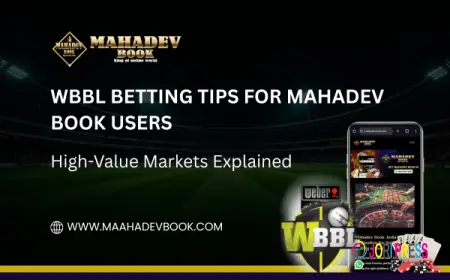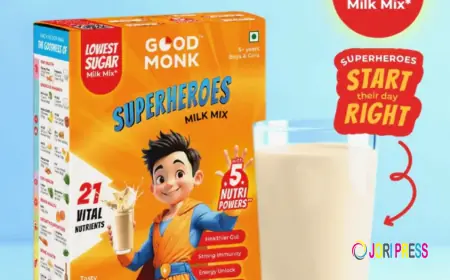10 Key Metrics Every Performance Marketing Agency Should Track for Optimal ROAS
If you lead or consult a marketing team, you already know the pressure: budgets are scrutinised, performance needs to be justified, and clients demand clarity.

“Data is the new creative — only when you harness it well, creativity scales.”
If you lead or consult a marketing team, you already know the pressure: budgets are scrutinised, performance needs to be justified, and clients demand clarity. For performance marketing agencies — especially those positioning themselves among top performance marketing companies in Bangalore or elsewhere — mastering the right metrics isn’t optional. It’s the difference between being a cost centre and being a growth partner.
Below is a blueprint: 10 key metrics every performance marketing agency should track for consistently optimal ROAS (Return on Ad Spend). Use this as your dashboard, your client conversation guide, and your growth accelerant.
Why metrics matter (beyond vanity)
Before diving into numbers, a pitfall: many agencies treat metrics like trophies — a high clicks number, a low cost-per-click — but without tying them to business outcomes. Metrics only matter when they move the needle: revenue, profit, client retention, efficiency.
Tracking well-chosen KPIs helps you:
-
Diagnose underperforming campaigns quickly
-
Make data-driven shifts in budget allocation
-
Forecast performance, margins, and capacity
-
Position your agency as a strategic, accountable partner — not just an execution shop
With that in mind, here are the 10 metrics that separate the data-driven from the guesswork-driven.
1. ROAS (Return on Ad Spend)
Why it matters: The single best metric for “did our ads earn more than they cost?”
Formula: Ad-attributed revenue ÷ Ad spend
A ROAS of 4:1 (i.e. earn ₹4 for every ₹1 spent) is often a solid benchmark for many e-commerce and direct response campaigns.
However, margin structure matters. Always compare ROAS against the break-even threshold for that client, factoring in production, fulfilment, and overhead costs.
Use it at campaign, channel, and even ad-set levels to identify scaling opportunities or cut losses early.
2. CPA (Cost per Acquisition) / CPL (Cost per Lead)
Why it matters: It quantifies efficiency — how much it costs to get a conversion or lead.
Formula: Total ad spend ÷ Number of conversions (or leads)
When you optimize campaigns, the natural tension is: increase volume or reduce CPA. Smart agencies find the sweet spot.
Compare across channels: if Google Ads CPA is ₹800 and Facebook CPA is ₹500 (for similar lead quality), that’s a signal.
3. Conversion Rate (CVR)
Why it matters: Even with high traffic, a low conversion rate kills ROI.
Formula: Conversions ÷ Clicks × 100
This metric reveals creative, UX, offer, or funnel friction issues.
When CVR is low, you may optimize landing pages, improve CTAs, or align messaging to match ad intent more tightly.
4. Click-Through Rate (CTR)
Why it matters: It measures initial engagement — how well your ad copy / creative hooks the target.
Formula: Clicks ÷ Impressions × 100
A low CTR suggests the creative is missing or targeting is off. A high CTR but low CVR suggests poor funnel alignment.
Segment CTR by audience, placement, device — micro insights bleed into big wins.
5. Ad Frequency & Impression Saturation
Why it matters: Audience fatigue. Too many impressions, and your campaign turns annoying, not persuasive.
Indicator: Average frequency (how many times a person saw your ad)
Monitor diminishing marginal returns. If conversions stagnate or CPC creeps up after a frequency threshold, rotate creatives or prune targeting.
6. Customer Lifetime Value (CLV or LTV)
Why it matters: When you know the long-term value of a customer, you can invest more aggressively in acquisition.
Bring acquisition metrics into context: a slightly higher CPA is justified if the LTV is high.
For subscription or repeat-purchase businesses, LTV is indispensable in setting ROAS and CPA targets.
7. Return on Investment (ROI) of Media vs Total ROI
Why it matters: ROAS isolates advertising spend, but ROI captures the full business profitability after overheads, operations, and creative costs.
Comparing both helps you understand whether your campaigns are truly contributing to bottom-line growth.
For example, a campaign may deliver a 5:1 ROAS but, when indirect costs are tallied, yield only a 2:1 ROI. Use both lenses.
8. Attribution & Incrementality
Why it matters: In multi-touch funnels, last-click attribution is misleading.
Monitor assisted conversions, view-through conversions, and cross-channel interactions.
Deploy holdout experiments or geo-splits to quantify incremental lift — what your campaign truly drove versus what would have happened organically.
9. Media Efficiency Ratio (MER) / Marketing Efficiency
Why it matters: MER = Total Revenue ÷ Total Ad Spend (similar to ROAS, but at a full-program level).
While ROAS is campaign-level, MER shows the efficiency of your entire media stack.
It's especially useful when organic, referral, and paid channels blur. Use it to assess the “whole engine” rather than isolated silos.
10. Campaign Velocity & Time to First Conversion
Why it matters: How quickly your campaigns ramp or slow is a signal of relevance, market fit, creative strength, or targeting viability.
Track metrics like:
-
Time to first 10 conversions
-
Ramp-up curve (spend vs results over days)
-
Decay rate (how quickly performance deteriorates)
These help you calibrate scaling decisions and pinpoint where lag kicks in.
Dashboard Strategy: How to bring it all together
Choose 5–7 core metrics per client (not all 10). Customise based on their business model (e-commerce, lead gen, subscription).
Set acceptable guardrails (minimum thresholds, target ranges) and define escalation paths when metrics fall out of range.
Visualize these on dashboards (e.g. Looker Studio, Tableau) grouped by funnel stage — awareness, acquisition, conversion, retention.
Ensure your team updates daily or weekly — not monthly — to catch anomalies or trends in time.
Why tracking metrics isn’t enough — you need execution rigour
-
Test and iterate: Always run A/B tests on creative, landing pages, and offers. Don’t double down on assumptions.
-
Budget reallocation: Move spend from underperformers to overachievers dynamically, using the data as your lever.
-
Creative refresh cadence: Change creatives before fatigue kills performance. Use performance metrics to guide timing.
-
Narrate insights to clients: Go beyond numbers. Translate “CTR dropped 20%” into a story: “The messaging no longer resonates after one week — we plan to test new angles to keep engagement high.”
Why agencies struggle — and how Wisoft addresses it
Many agencies promise “performance marketing” but falter because:
-
They chase vanity metrics (impressions, clicks) without tying to ROAS.
-
They lack attribution sophistication — relying solely on last-click.
-
They lack operational cadence — metrics get stale or ignored.
-
They aren’t built to optimize full-funnel (paid + organic + retention).
That’s where Wisoft Solutions stands apart. Wisoft brings to the table:
-
A holistic performance framework combining SEO, paid performance marketing, creative, and retention strategies — not silos.
-
Data engineering and attribution modelling, so insights are accurate and incrementality is understood.
-
A test-governed culture — creative, messaging, funnel — everything optimised.
-
Outcome-based SLAs: Wisoft commits to ROAS, growth, and scaling, not just activity-based deliverables.
If you're reviewing performance marketing companies in Bangalore, Wisoft’s proposition isn’t just “we’ll run your ads.” They offer performance-led, scalable growth systems.
Getting started — your 30-day plan for metric mastery
-
Audit what metrics the client or your team currently tracks.
-
Map them to the 10 above and eliminate irrelevant ones.
-
Build a dynamic dashboard — set guardrails and alerts.
-
Run one experiment per week: creative, funnel, offer, audience.
-
In your bi-weekly or monthly review, narrate metric shifts in simple stories: here’s why CPA jumped, here’s how we fixed it.
-
Use these metric narratives to elevate your agency’s strategic value, not just execution.
Conclusion
Any performance marketing agency can launch campaigns. But agencies that succeed — and scale — are the ones that bake measurement into their DNA, tie metrics tightly to client objectives, and use data to steer growth.
If your stack already includes SEO, web development, SMS/WhatsApp marketing, and retention techniques, combining those with a rigorous performance framework is what separates mediocre from elite performance marketing. Wisoft Solutions is precisely built to deliver that suite: integrated, strategic, data-driven growth.
If you’re serious about turning performance marketing from a cost centre into your most trusted growth engine, give Wisoft a look. You’ll find more than an agency; you’ll find a growth partner.
What's Your Reaction?
 Like
0
Like
0
 Dislike
0
Dislike
0
 Love
0
Love
0
 Funny
0
Funny
0
 Angry
0
Angry
0
 Sad
0
Sad
0
 Wow
0
Wow
0














































